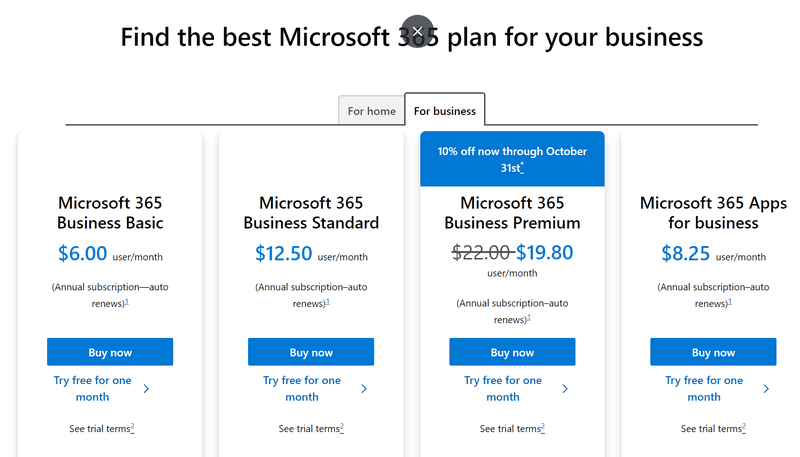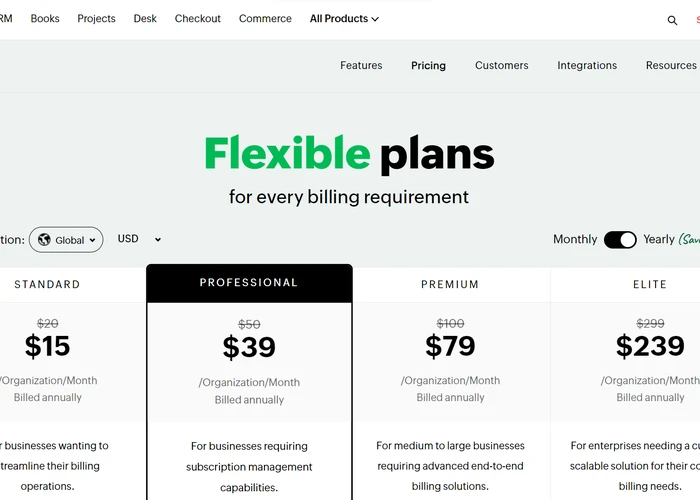Subscription-Based Software - Definition, Business Case & Examples.
How you monetise your software determines how much revenue your business will generate. Learn the business case for subscription-based software and how it can help you maximise your revenue.
There used to be only one way of selling software. That is through a perpetual licence where customers make a large one-time purchase of a copy of the software they install on their device.
Thanks to the advent of cloud computing and automation tools, there is a more effective and flexible way to sell software that unlocks value for both software vendors and users. Perpetual licenses are making way for subscription-based software.
This article defines subscription-based software, explores its benefits for vendors and customers, and cites subscription-based software examples you can draw inspiration from as you transition to the recurring revenue pricing model.
What is subscription-based software?

Subscription-based software is a licensing model where you charge customers a recurring fee to access your software instead of asking for one-time payments for perpetual licenses or lifetime access.
The price of a software subscription depends on the length of the subscription and the plan a customer signs up for. Different plans come with different features or levels of access. Higher, more expensive plans typically unlock more premium features and benefits.
With the perpetual license model, customers make a one-time payment for the software and receive a copy of the software on a CD or floppy disk or a download link with licensing keys that they then use to install it on their computer. In contrast, subscription software is usually cloud-based.
If users do not pay to renew their subscription, they lose access to the software. Subscription-based software is similar to a leasing arrangement where you pay a recurring fee to use a product.
The fee does not confer lifetime access; it only gives a subscriber limited-time access. Customers have to renew their subscriptions to ensure ongoing access.
Types of software subscriptions.
The subscription fee a customer pays entitles them to use the software. But how much or how long they have to use software depends on the type of subscription pricing model you are following.
There are three basic types of software subscriptions you can choose:
Use-time, where subscribers have a set period within which they have access to the software. This period is usually a month but can be a year or even three years.
Consumptive, where a user gets credits that are deducted every time they use specific features of the software. This means heavy users deplete their points faster than light users.
Metered, where you buy credits that deplete every time you use the software. So, the more you use the software, the faster your points deplete and the sooner you have to renew your subscription.
The type of software subscription you choose will depend on the software you offer and what it’s used for, the monetisation model your competitors follow, and what your customers perceive to offer the most value.
How does a software subscription model work?

Subscription software is typically offered in tiers or plans. Users opt into a plan that bundles certain features together or allows access to a set number of users.
These plans have different prices that are set on a sliding scale, with the plan with the least number of premium features or that allows the fewest users to be the least expensive.
A subscription has a time cap, usually a month, after which a customer must renew with a fresh payment. These payments are usually automated, meaning all subsequent renewals are automatic, with you charging the debit card the customer supplies at sign-up.
The best way to understand how the subscription model works in software is to use the analogy of buying a house versus renting it.
Buying a house entails paying a specific amount to secure ownership of the property. Whether you make one large payment or pay a percentage of it as a deposit and the rest in instalments, full payment transfers all rights to the house to you.
Renting, on the other hand, gives you the right to use the house as long as you pay the monthly rent. Your use of the house is on a rolling basis, meaning you only use it as long as you maintain your rent payments. If you skip a payment, the owner may evict you.
So, subscription software works the same way as renting out a house. Users pay a recurring fee to use it. As with renting out a house, you are responsible for repairing and maintaining the house.
Just as a tenant will vacate their rented accommodation if you don’t maintain it well, a customer can cancel their subscription if they feel your software is now outdated or glitchy.
On the contrary, with a perpetual license, users will be responsible for their IT environment, including the security, speed, and compatibility of the device on which the software runs. Subscription software is cloud-hosted, meaning the vendor is responsible for patches and updates and ensures that it’s always accessible.
Benefits of using a subscription-based pricing model for software
The subscription model is now the preeminent way of pricing software applications. The biggest attraction for vendors is the recurring, steady stream of revenue this model offers. If your revenue is recurring, it is easier to predict and make more informed business decisions.
Greater flexibility for both the software’s vendor and users.
A subscription-based software licence allows you to offer multiple plans of the same software, which unlocks upgrade opportunities that boost revenue.
The choice that offering multiple plans provides allows customers to choose a plan that suits their needs and budget. Customers can also upgrade and downgrade their plans as their needs and budgets change.
More affordable option than perpetual licences.
A lifetime or perpetual license represents a smaller and much more affordable investment than a large one-time payment to purchase a perpetual license. You will, therefore, generate more revenue by selling cheaper-priced subscriptions.
By paying small regular payments for access or use of the software, users also avoid locking themselves in a huge expense for a product they may not need long-term. Due to the permanence of perpetual licences, customers also have less flexibility and room in the budget to test other software.
Easier to automate.
By using the subscription model to monetise your software, you make it easier to automate customer payments and allow users to manage their accounts. Automation will reduce administrative overhead and eliminate billing errors that cause revenue leakages.
Offers location independence.
Subscription-based software is, by its nature, only accessible in the cloud. This means users can use it from anywhere they have internet connectivity. This broadens your market to include people who work on the road and those who follow a nomadic lifestyle.
Software as a subscription vs software as a service
To clearly understand how the subscription software works, it is essential to make a clear distinction between software as a subscription vs software as a service (SaaS). Yes, while these two complement each other, they are technically not the same.
Software as service refers to how software is delivered or structured, while software as a subscription explains how you monetise or obtain revenue for a piece of software. Delivery vs monetisation. So, the two models are not synonymous.
SaaS generally means your software is offered in the cloud, meaning customers can access it online. Customers lease or subscribe to access or use the same software. They don’t have to install the software on their devices and will use it if they pay the monthly or yearly fee when it’s due.
So, a SaaS product is not sold via a one-time license to be installed on a user’s computer. Rather, it is rented out, with customers retaining the right of access as long as they pay a fee at a set frequency.
Software as a subscription refers to a monetisation model where customers pay a recurring fee to use your software. Instead of paying a large upfront fee for lifetime access, customers make smaller regular payments.
So, in some ways, ‘software as a subscription’ is an extension of the SaaS model that only addresses how you sell your software or generate revenue.
Subscription-based software examples.
Although the subscription model is a fairly new way to sell software, it has been used for centuries, notably to sell newspapers and books. In the UK, people were subscribing to milk deliveries as far back as the 1860s.
CRM software behemoth Salesforce was the first software company to adopt the subscription business model in the early 2000s. Now, almost every software company sells a subscription to their product.
Even software companies like Adobe and Microsoft that traditionally sold perpetual licences have transitioned to the subscription pricing model.
Microsoft now sells the Microsoft 365 subscription that bundles many of the software giant’s apps and cloud services into one package customers can access through one monthly fee.
The Adobe Creative Cloud monthly and yearly subscriptions have bundled the company’s most popular graphic design and photo editing apps into one cloud-accessed product.
Subscription-based software examples you may be familiar with are:
Slack - team collaboration.
Trello - project management,
Google Workspace - team meetings and communication.
Hubspot - customer relationship management and
FreshBooks - small business accounting.
Local examples of subscription-based software business owners in Kenya may use include Peak Accounting, which offers cloud-based accounting business accounting software.
Should you transition your software business to a subscription pricing model?
Granted, there are some types of software for which the subscription model isn’t a compelling value proposition for customers. However, for most types of software, the recurring revenue model offers great benefits for vendors and users.
Software that requires regular updates and has multiple features that can be offered as upgrades is a great fit for the subscription model. The subscription model gives you more control over your software’s security, which is also good for users as it gives them one less thing to worry about.
Offering your software as a subscription with upgrade options makes it more scalable for you and your customers. Customers only pay for the features they need and upgrade as their needs grow.
You, as the vendor, can also sell the same software to multiple users and add higher subscription tiers as you add more premium features, unlocking opportunities to boost revenue.
There is a strong case to move your software business to a subscription pricing model. That transition needs to be carefully planned. You must test your hypothesis by piloting a small test market to create plans that deliver optimum value to customers and find the right subscription price.
Your most important decision when you finally transition to a subscription model will be your choice for the subscription and automatic billing software. If you make the wrong choice, it could crush your recurring revenue dreams and ruin your business.
Intasend is the subscription and automatic billing software of choice for Kenyan businesses looking to pivot to the subscription billing model.
Sign up for an Intasend business account to automate your subscription billing and invoicing.

